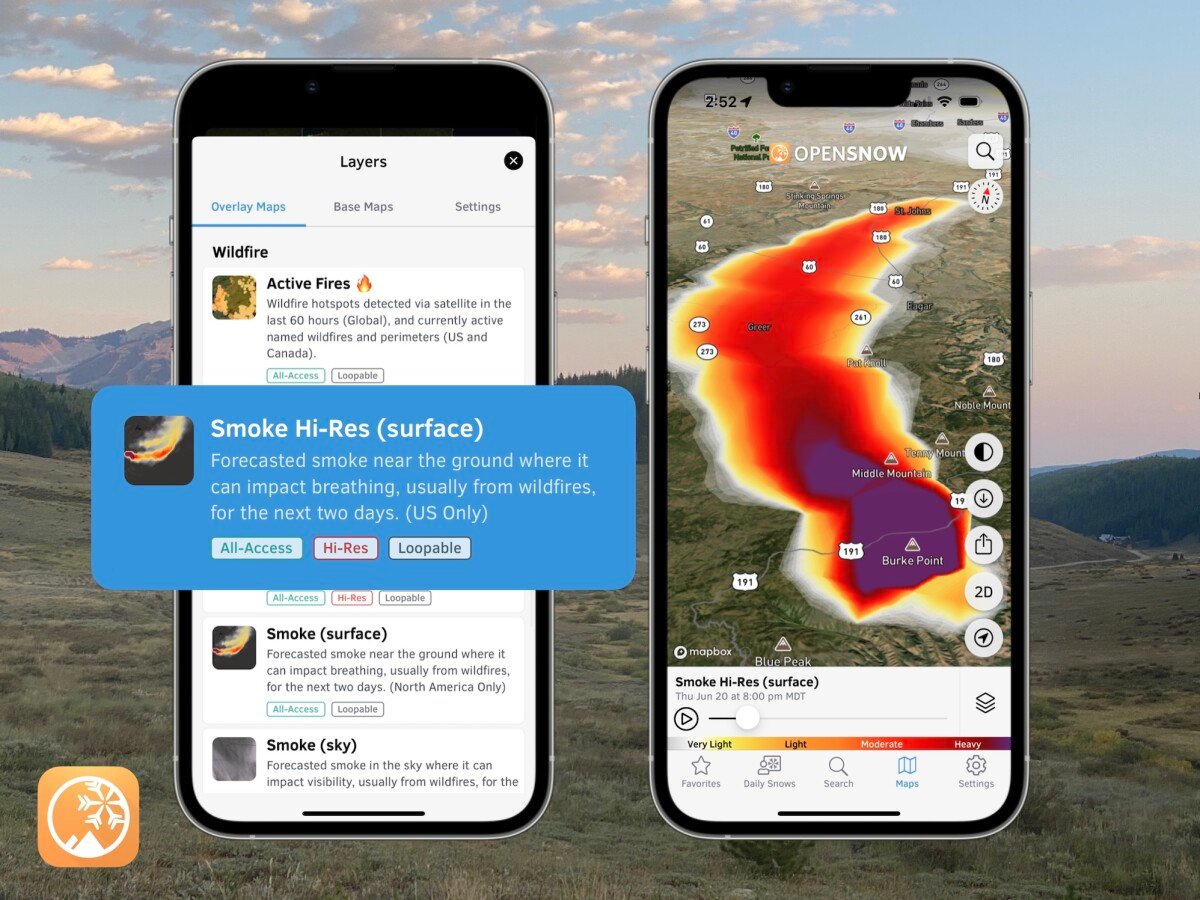US & Canada Daily Snow

By Zach Butler, Meteorologist Posted 3 months ago April 7, 2025
Snow Stays to the Northern Tiers
Summary
An active Northwest storm track will bring heavy snow to Alaska and British Columbia, with lighter snow extending into the PNW. The interior West will see mostly dry and clear conditions with spring skiing. The East will see cooler weather, and a couple areas of light snow bringing late-season fresh turns as we near the end of the season. Model uncertainty plagues the extended forecast.
Short Term Forecast
Helpful Links:
7-Day Snow Forecast:
The storm track in the West will lift north and affect British Columbia and the PNW. The heaviest snow will fall to the north in BC with tail-end precipitation and lighter amounts of moisture in the U.S. Snow in the U.S. will be heaviest in Washington with 1-2+ feet this week. The rest of the West, through the Central Rockies, will see mostly dry and mostly clear weather with nice spring skiing in the forecast.
More details from our local experts...

In the East, colder weather will bring widespread light snow this week. A couple of weak storms moving along the U.S.-Canada border will bring a couple areas of light snow and a few late-season lake effect snow showers. The heaviest snow will stay in southern Canada and northern New England. An uncertain storm at the end of the forecast could bring additional snow to New England.
More details from our local experts:

Forecast for Mon (Apr 7) to Tue (Apr 8):
The Northeast will see colder weather and an associated weak storm bring light snow through the Great Lakes, northern Mid-Atlantic, and New England. The heaviest snow of 3-12 inches will stay in southern Canada, with late-season fresh turns!
The Northwest will see an active and warm storm track move over the Pacific Ocean. The brunt of the storms with heavy snow will impact Alaska and British Columbia. Tail-end precipitation will slide into the PNW with light snow through northern Wyoming.

Forecast for Wed (Apr 9) to Thu (Apr 10):
Cool northwest flow will continue in the East, bringing a few late-season lake effect snow showers with minimal to light snow accumulations.
The storm track in the Northwest will continue to bring snow to Alaska and British Columbia. Storms will track north and keep a majority of precipitation out of the PNW, with only a few snow showers in northern Washington, Idaho, and Montana.

Forecast for Fri (Apr 11) to Sat (Apr 12):
Model uncertainty makes this part of the forecast uncertain. The storm track in the Northwest will continue to stay active, making it a deep week of snow through Alaska and British Columbia. There could be a storm that slides into the PNW again with light snow, but there is model disagreement about where the storm tracks and how strong it is.
A storm along the Eastern seaboard will track along the coast, but substantial model uncertainty makes the forecast uncertain. The storm could strengthen and bring interior snow to the Northeast or slide out to sea with minimal effects.

Extended Forecast
Outlook for Sun (Apr 13) to Fri (Apr 18):
Model uncertainty will affect the extended forecast for the northern tiers of the U.S. The storm track will remain active through Alaska and British Columbia, continuing to bring more snow and deep conditions. The biggest area of uncertainty is how far south storms will move. A couple of storms will enter near the U.S.-Canada border, and could bring precipitation and snow to the PNW, or stay north.
The East will see seasonable conditions, and a coastal storm that could bring snow on Sunday, April 13, to interior New England. After this storm, seasonable temperatures will continue, but with drier than normal conditions. Quiet weather will affect other areas of the U.S., with spring conditions developing.

Thanks so much for reading! Next update on Wednesday (April 9).
Zach Butler
Announcements
NEW: Forecast Range Graphs

You can now view individual forecasts from global and regional high-resolution weather models in OpenSnow. This includes forecasts from the GFS, ECMWF, HRRR, and ICON models, as well as the OpenSnow blend.
The graphs give you a behind-the-scenes look at the forecast and make it easier to see if the forecast models are in tight agreement or if there is a wide range of potential outcomes over the next 10 days.
Note: This is currently only available in the OpenSnow iOS app and website (OpenSnow.com). Android will be available soon.
Getting Started
- Go to any location screen.
- Scroll down under "Weather" or "Snow Summary".
- Tap "View Interactive Chart" in the app.
- Adjust the model, timeframe, or data view.

Why is the Forecast Range helpful?
Understand if there is high or low confidence in the forecast. If all models show a similar forecast, there is higher confidence in the forecast, and vice versa.
Dig into the details. If you have experience looking at weather model data and trust certain models or higher-resolution models, you'll be able to isolate your favorite data.
View → Forecast Range Graphs
About Our Forecaster




